Update (March 18, 2025): Zwift’s v1.86 release includes frame and wheel performance tweaks, as well as Bike Upgrade functionality, all based on the results of the wind tunnel tests discussed below.
On August 27, I received a message from Zwift co-founder and original developer Jon Mayfield:

This got my attention. As you may know, I’ve published a lot of in-game performance data over the years, including the popular Tron vs Top Performers chart showing how Zwift’s Tron bike performs against other fast frame+wheelset combos in game.
“Disruptive changes re: bike performance”? What was Jon thinking of doing?
We chatted that day, and Jon shared a few key points:
- The fastest and slowest “standard” frames in Zwift are currently only separated by ~22 seconds in our standard ~50-minute test (see performance charts). Jon’s hunch was that this gap was too small and didn’t reflect real-world physics.
- With garage upgrades coming soon to Zwift, the team saw a need to increase this separation between frames in order to avoid weird situations like an upgraded slow frame (think Zwift Steel or similar) outperforming a fast frame like the Specialized Venge S-Works.
- If Zwift was going to change the performance of in-game frames, they wanted those changes to be backed by science. (While Zwift isn’t trying to be a simulator, in-game speeds have always been based on real-world physics whenever possible.)
With that in mind, Jon and his team were planning a visit to the Win Tunnel at Specialized headquarters in Morgan Hill, CA. Would I be interested in joining them?
Of course I would.
And that’s how I arrived here in late October:
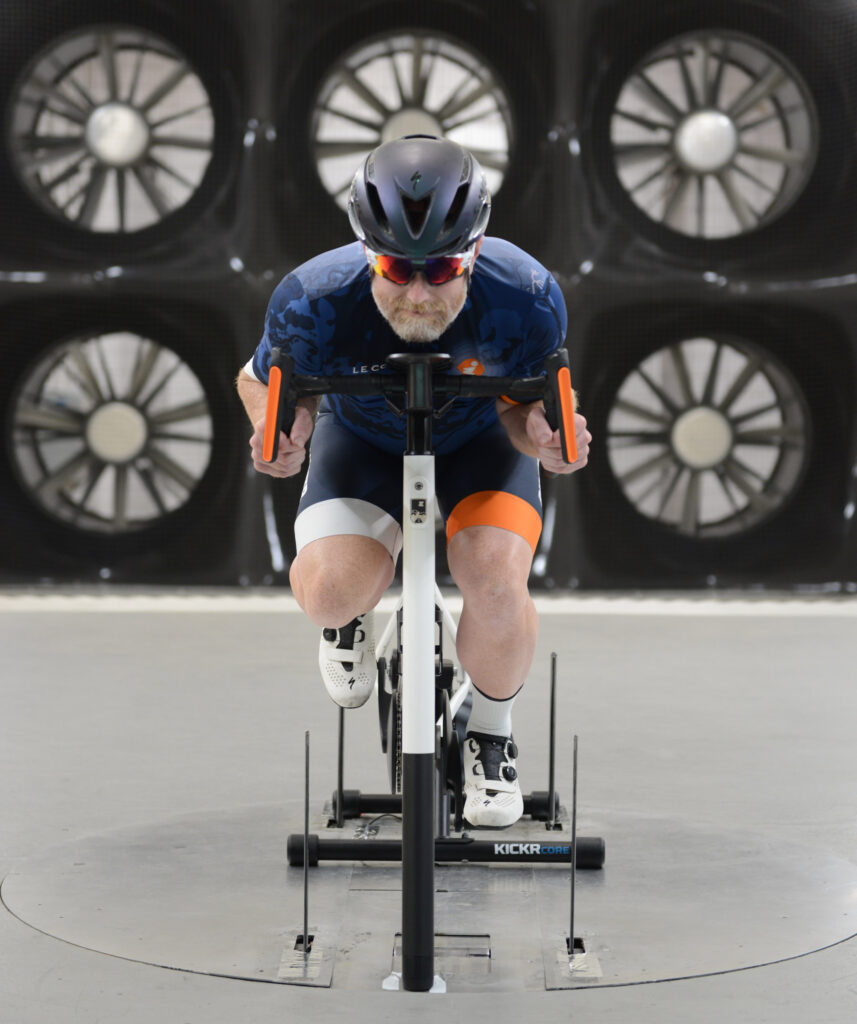
But I’m getting ahead of myself…
The Team
It was dark o’clock when I left my house in Kelseyville, CA to drive three hours south to Specialized HQ in Morgan Hill. I grabbed a quality espresso, then met up with Zwift’s team to get security badges so we could access the Win Tunnel. Zwift employees in attendance were:
- Jon Mayfield: VP Head of Game (and Co-Founder of Zwift)
- Mark Cote: VP Head of Product
- Scott Campbell: Senior Director of Game Design
- Mike Bhatt: Senior Technical Game Designer
- Nick Kalkounis: Director, Product Management
- Joseph Battisti: Global Product Marketing – Game & Content
Also with us was Lionello Bardina, R&D Engineer Aerodynamics from Specialized. His job was to run the tests while answering lots of questions and generally overseeing the tunnel’s usage.
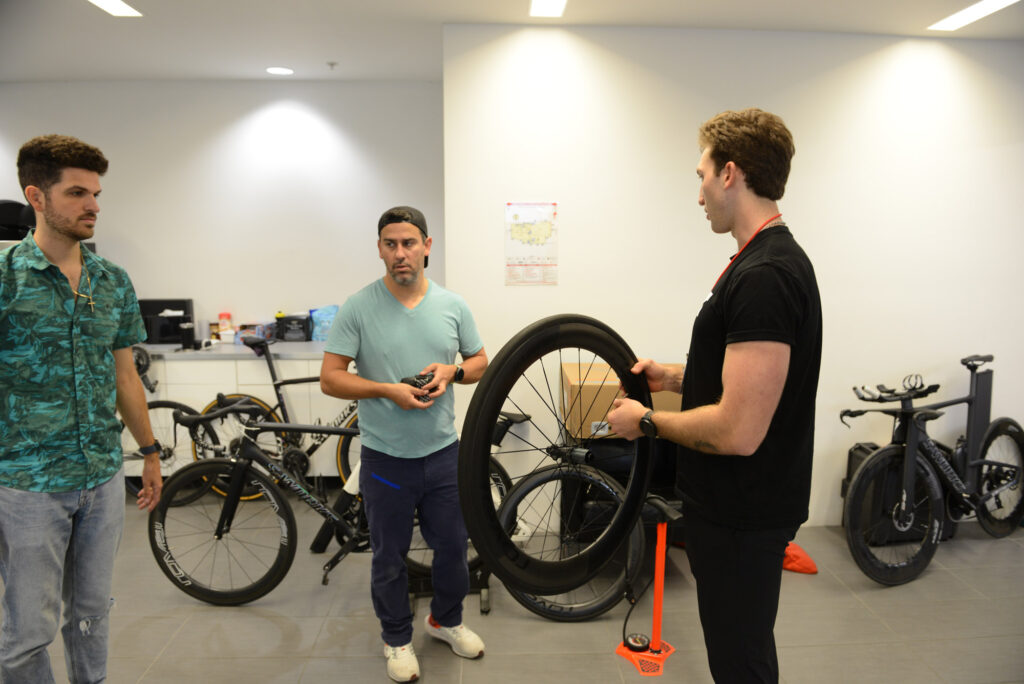
At first this seemed like a lot of cooks to have in the kitchen, but I soon learned that when it comes to robust wind tunnel testing, you need a small army! We had the tunnel booked for two days, and we were scrambling throughout both days to set up and complete all the planned tests.
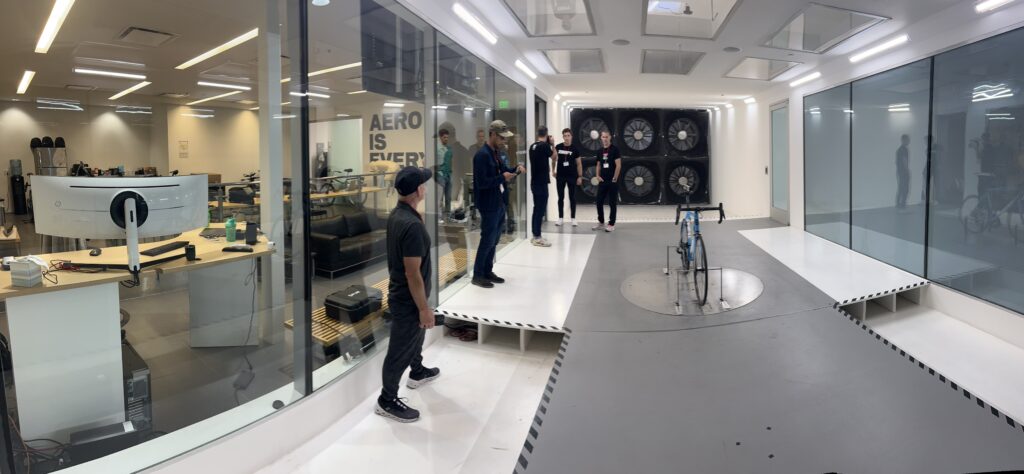
Some of the guys were working on setting up actual bikes – swapping out pedals, adjusting geometry, swapping out wheels, and properly attaching it to the tunnel’s apparatus.
Others were taking notes, so data could be properly analyzed in the days to come. And of course Lio was manning the helm, sitting behind the computer to control the tunnel, run the actual tests, and gather the data for later analysis.
A Note About Mark Cote
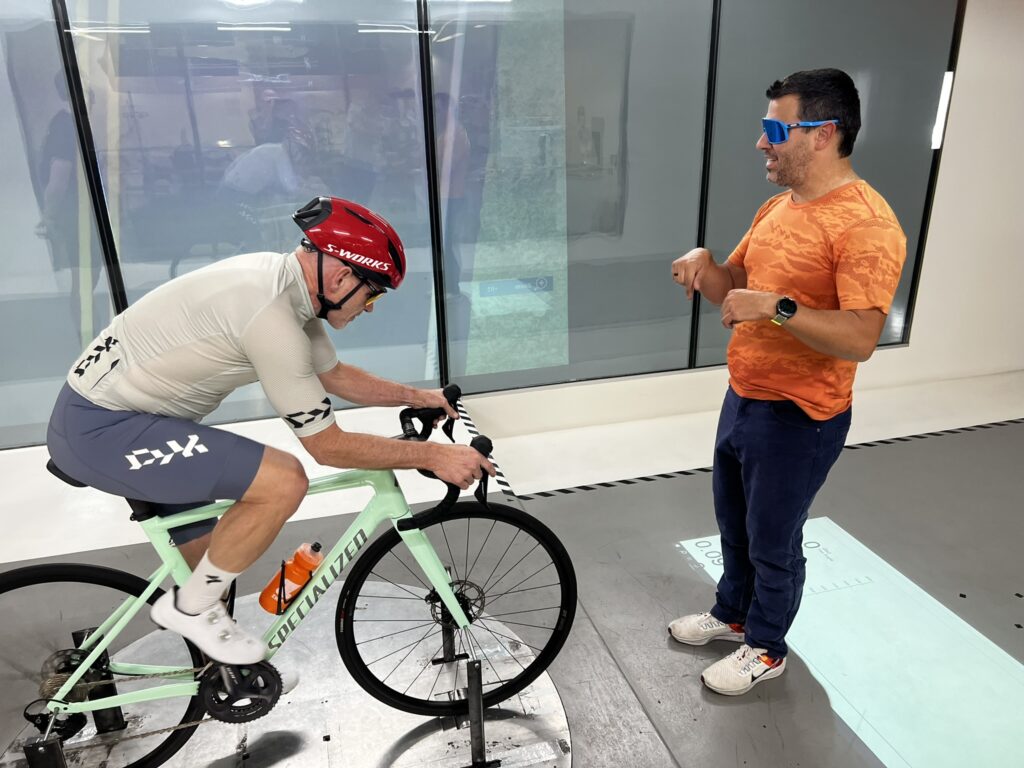
Within a few minutes of hanging out in the Win Tunnel, I came to the realization that there was a lot I didn’t know about Mark Cote.
Mark came to Zwift in early 2021 as the Senior Director of Content Programming after 12+ years at Specialized. We sat down for a nice Zoom chat just a few weeks after he arrived at Zwift, and he struck me as a likable, smart dude who could lead teams well and also wrap his head around data and make it actionable.
He was also a longtime Zwifter, having joined the platform in the early beta days of Jarvis Island. And he earned extra points when he saw my Venge ViAS in the office and shared that it was still the most aero bike frame they’d tested at Specialized at speeds over 30mph!
Mark has been at Zwift for almost 4 years now, and he’s currently leading the product teams at Zwift.
When we arrived at the Win Tunnel, Mark took charge. He stated the goals of the testing and explained the methodology we’d be using. Then as we got the first bike in the tunnel and the tests began, Mark started telling stories.
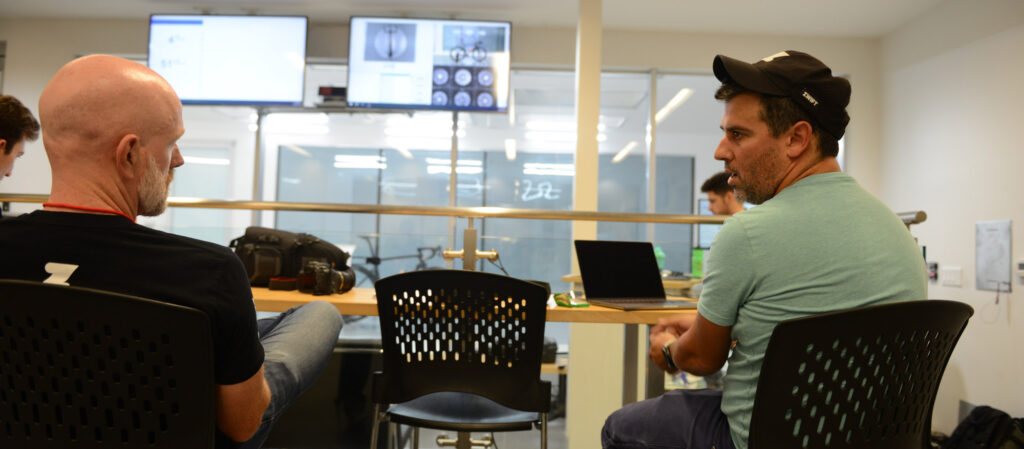
It turns out, he graduated from MIT in 2007 with a BS in Mechanical Engineering. And he wasn’t just anyone at Specialized: he led the development of the aero program and the design and build of the Win Tunnel with a few other key leaders at the company.
While he worked his way to leadership positions at Specialized and now Zwift, he’s also a brilliant engineer and aerodynamicist. And it was downright fascinating to hear him explain exactly how the Win Tunnel works while sharing memories of a scrappy team of employees and interns building and launching the audacious tunnel on a shoestring budget.
The Tests
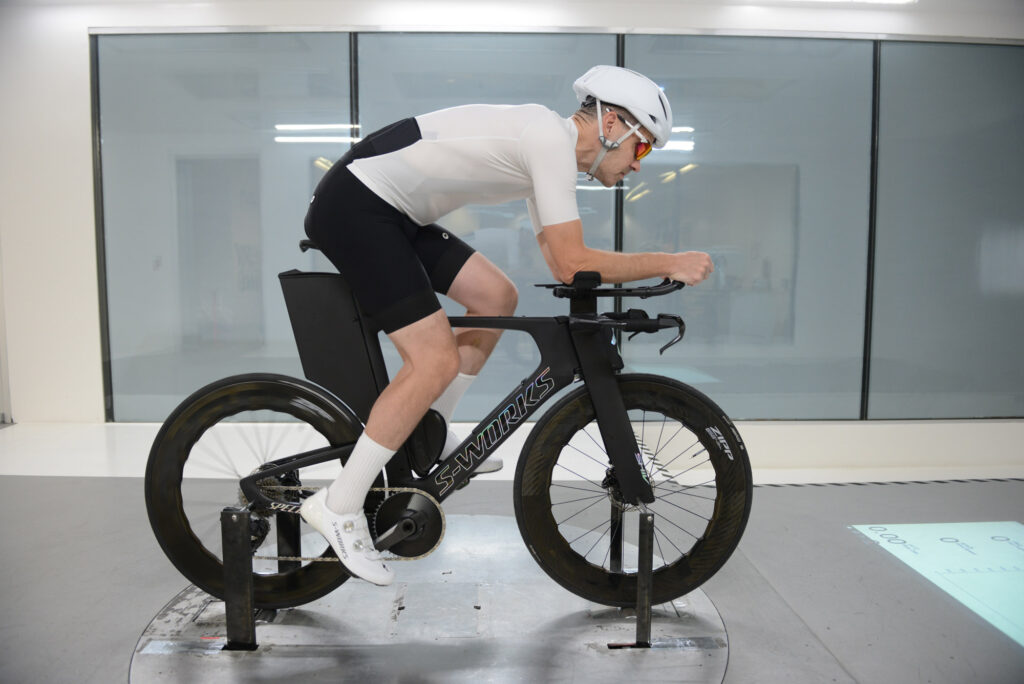
The team’s main goal for these tests was to establish a realistic delta between the slowest and fastest frames in Zwift.
(There were secondary goals of testing various wheelsets and different rider positions to gut-check the game’s wheel and rider physics as well. But I’m going to save that discussion for another post.)
So we tested a pile of frames, including:
- Stinner Steel (which the Zwift Steel frame is modeled from)
- Specialized Allez Sprint
- Specialized Tarmac SL6
- Jon Mayfield’s S-Works Shiv
- My Pinarello Dogma F
- Specialized Tarmac SL8
- My Specialized Roubaix SL4
- Specialized 2020 Venge
- Buffalo Bike
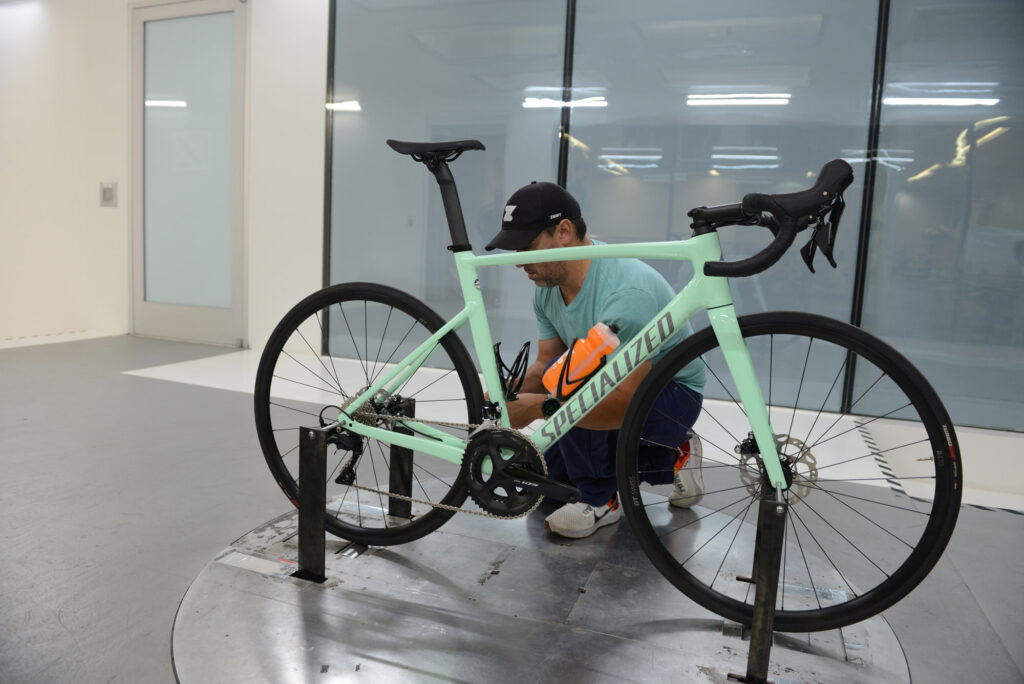
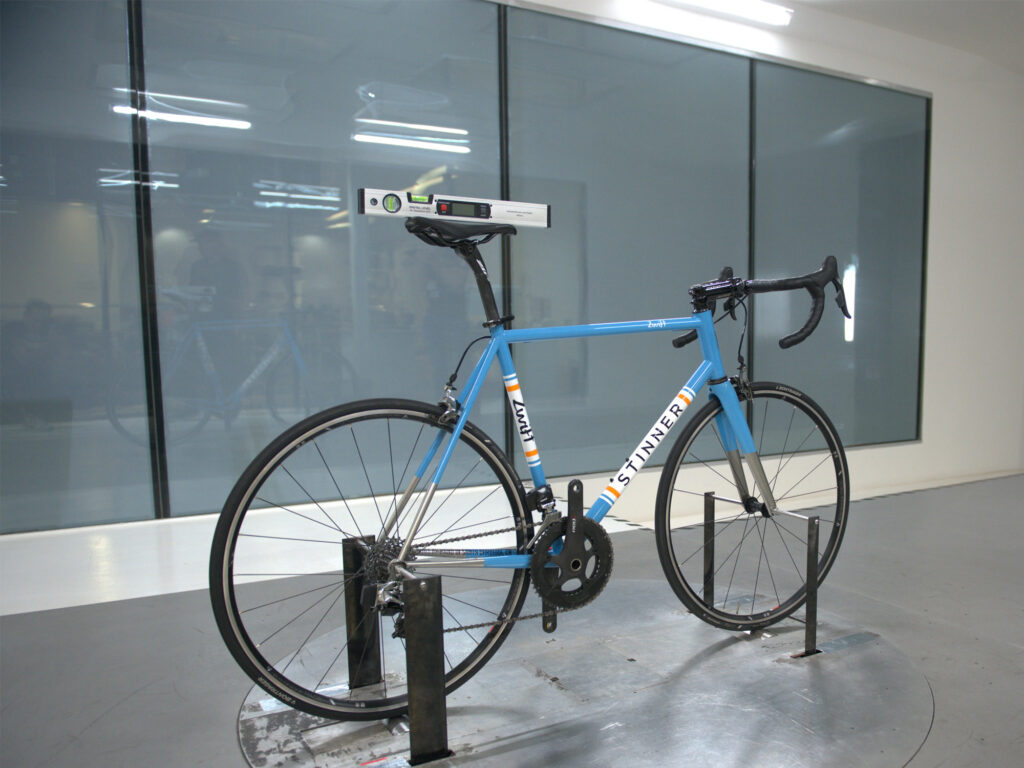
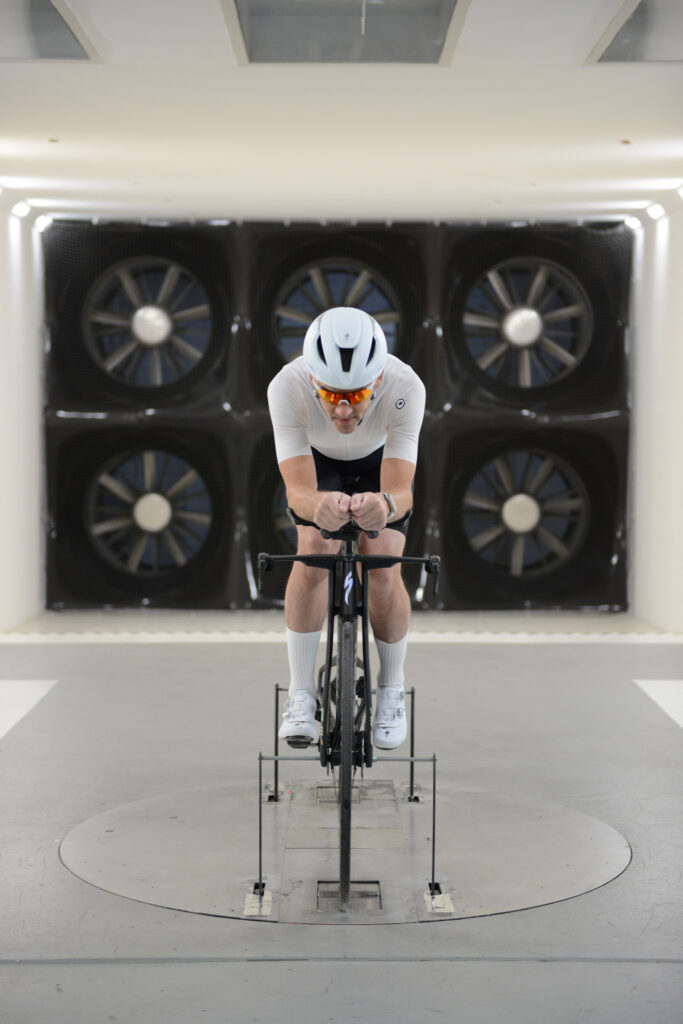
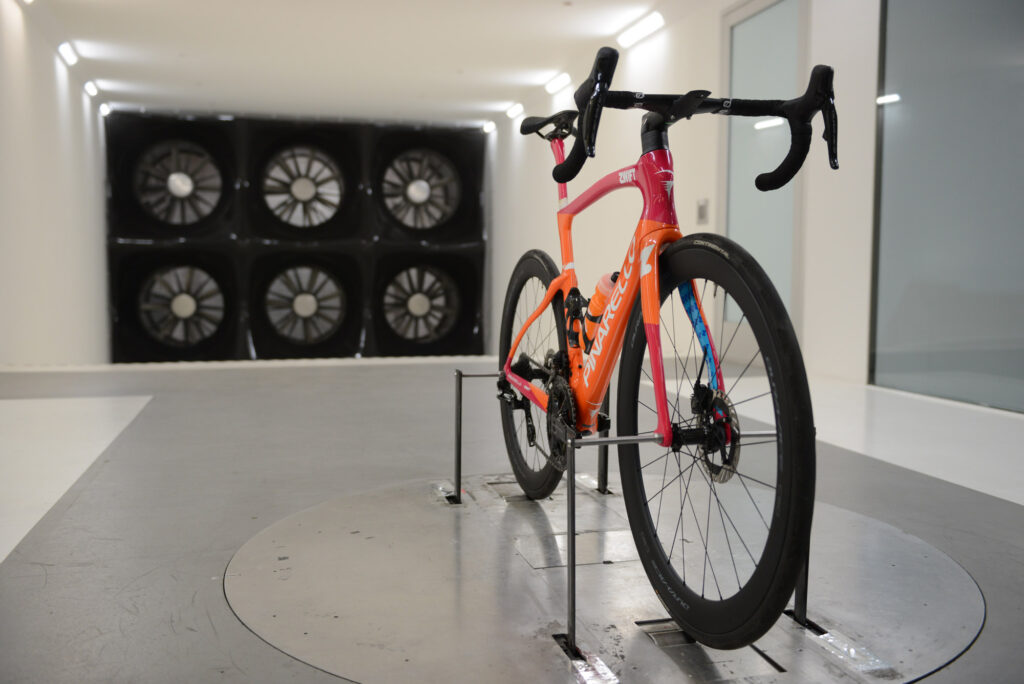
Bikes were tested with a basic alloy wheelset, as well as more advanced carbon hoops and even (in some cases) a disc wheel. The Win Tunnel is super precise, and it was amazing to look at the data and see how it could detect the difference between various setups at various yaw angles.
Jon had asked me to bring my Roubaix, because he had a hunch that some of the “slower” carbon frames would actually perform worse in the Win Tunnel than the steel frame. And you know what? He was right. My Roubaix was slower than the Stinner. Mark chalks this up to the cable routing and larger tubes.
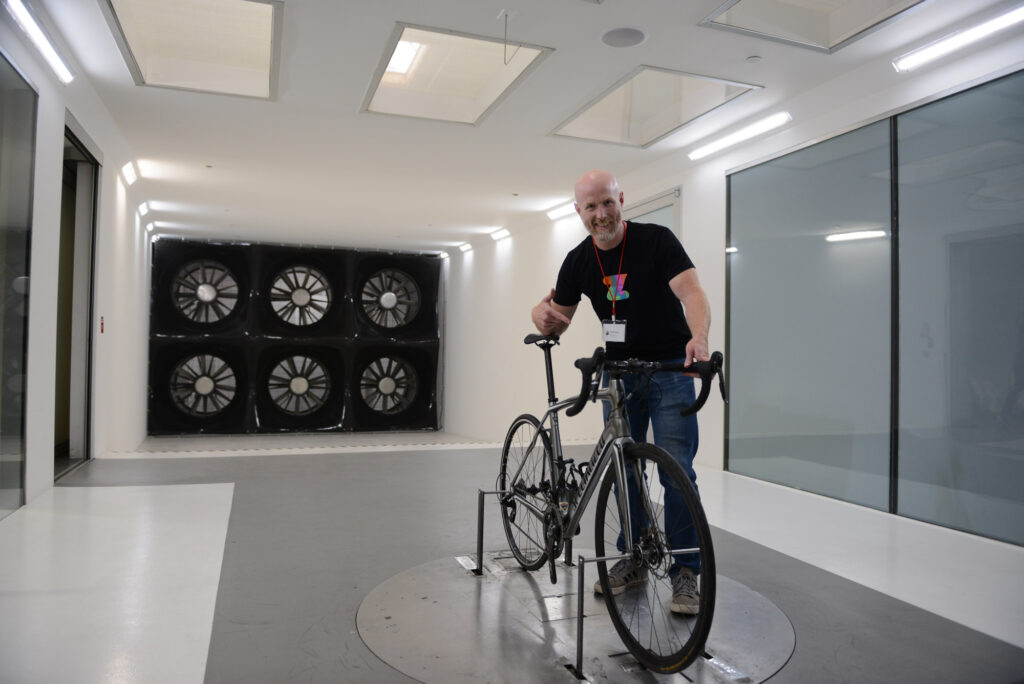
(But I still love that bike. I realized as it was sitting in the Win Tunnel that I’ve ridden over 50,000 miles on Zwift on that bike. It may not be the fastest frame outdoors, but it’s certainly been a great bike.)
After Hours
Of course, no Zwift outing would be complete without a ride. So after the first day we went for a spin. Here’s the crew lined out, with Jon in the wind:
Over the course of two days and a few meals, Mark Cote shared a lot of insider info about Specialized and the Win Tunnel that I’m not allowed to share here. We even got a sort of after-hours tour of some key rooms on campus, most of which were labeled “no photography.” Fascinating.
Specialized is turning 50 this year, and after looking at everything they do and how they do it, you begin to understand why. (And no, it’s not just because they have “Donut Thursdays” in the cafeteria each week. Although it was an epic selection of donuts + espresso.)
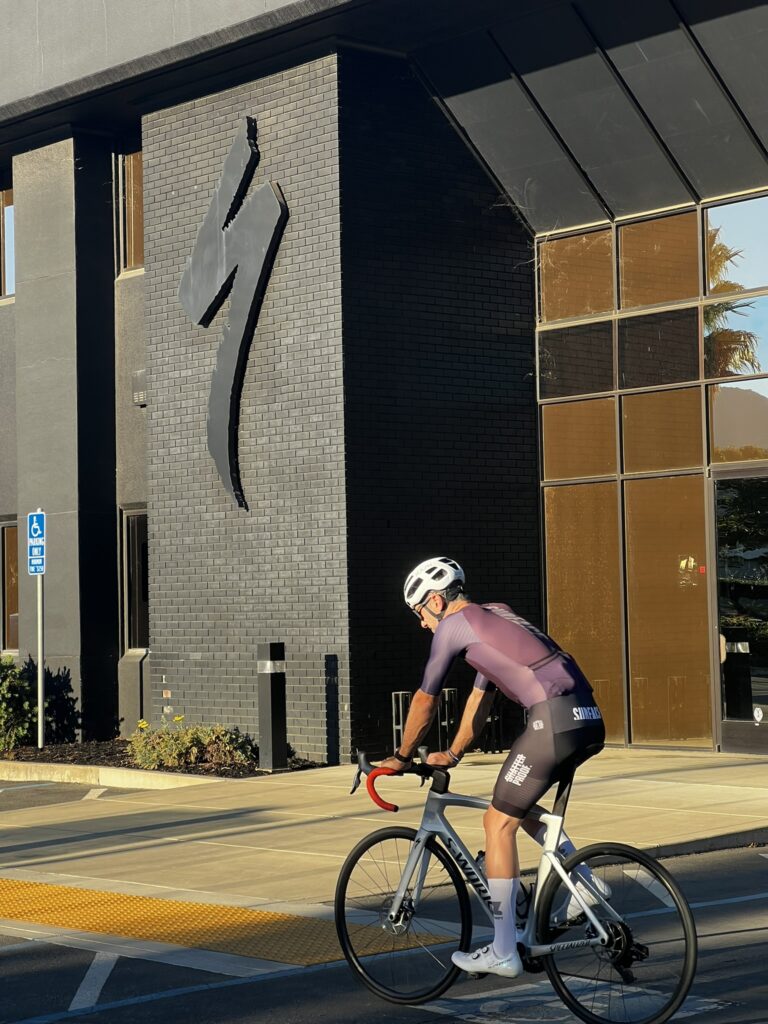
The Results
After two days of tests, Zwift’s team took all the data back to the office so they could crunch numbers and compare Zwift’s current frame performance to the wind tunnel data.
It turns out Jon’s initial hunch was correct: the difference in performance between Zwift’s slower and faster frames is smaller than it should be. Therefore, Jon and his team are planning to stretch that ~22-second difference into 65-70 seconds over an hour on a flat course, so in-game frame performance deltas more closely match what cyclists experience in the real world.
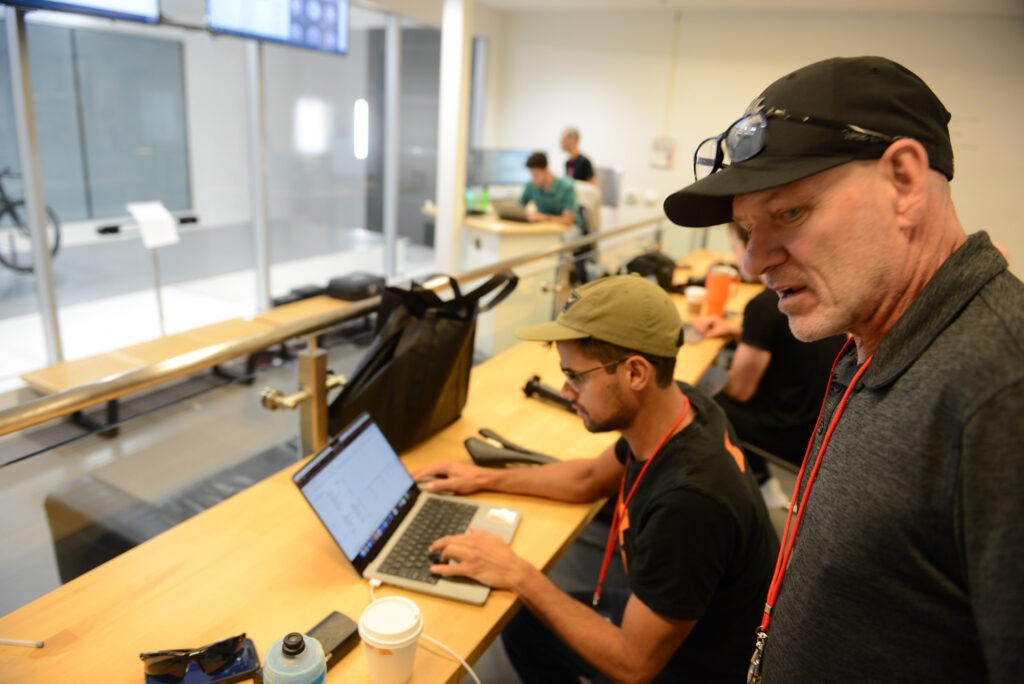
They plan to keep the fastest frames at their current CdA settings, while progressively slowing all other frames to effectively “spread out” the performance spectrum of in-game bikes. It’s worth noting that the overall aero performance “ranking” of frames in game lined up nicely with the test – that is, the fastest stuff in game is the fastest stuff in the tunnel. It’s really just the ranges (how much faster) that will be modified.
This change will be rolled out sometime in early winter, potentially soon after the new year. The tweaked frame performance will roll out along with the Garage Upgrades/Halo Bikes feature, so some of the performance lost in the slower frames can be reclaimed via upgrades if riders desire.
Concluding Thoughts, and What’s Next
Getting into the Win Tunnel is every road cyclist’s dream, so it was a huge privilege to be a part of Zwift’s visit to Morgan Hill. As I spun the pedals in the drops into a 50kph wind, I thought, “Zwift has taken me a lot of places, but I never thought it would take me here!”
I like that Zwift has chosen to take another look at bike performance. I’m impressed that they approached the task rigorously, with two long days of testing at the Win Tunnel. And I’m stoked that the result of all this work will be in-game bike performance that more closely matches the real world.
The upcoming changes are based on accurate, repeatable tests of real-world performance, so as much as I like to poke holes in things, there’s just not much here to complain about.
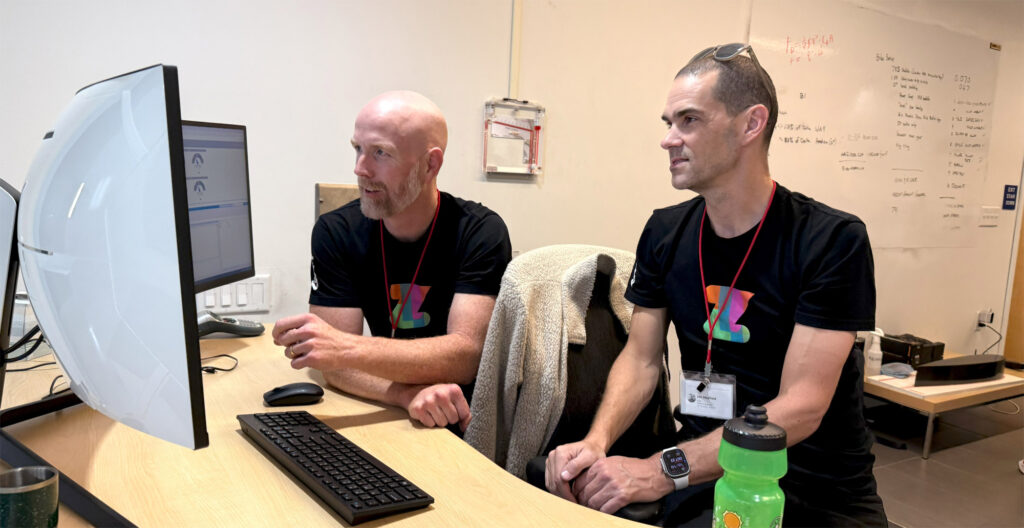
I’ve got a couple more articles planned on topics related to the Win Tunnel visit. First, we’ll be talking about the rider CdA testing that was done, and the results. (The goal is to make the CdA of our avatars as accurate as possible, which is sort of an impossible task when you consider the various body shapes, riding positions, and clothing of riders. That said, there’s probably room for improvement in Zwift’s current model.)
There will also, undoubtedly, be follow-up articles sharing updated performance numbers for frames. My bots are already complaining about all the miles they’ll have to put in!
Your Thoughts
What do you think of Zwift’s plans to modify frame performance, and what do you think of their approach to the problem? Share below!